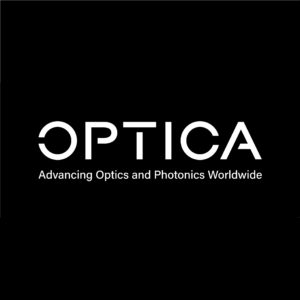
Matter PR devised a creative content campaign to celebrate the extraordinary diversity of one of the world’s leading scientific associations. Focusing on human storytelling, we told compelling real-life stories of its members and how their lives had been transformed by belonging to a global society.
The digital content campaign helped Optica, the leading global forum for light science and technology, promote its rich diversity, celebrate its unique brand values, and help new audiences identify with the 107-year-old organisation.
Our ‘Optica Community‘ campaign featured a series of magazine-style biographical stories of some of the world’s most eminent scientists working in light science. With biographies of experts in fields as varied as atomic physics and quantum mechanics to art and sculpture, Optica Community showcased the diversity of thought, specialism, geographical location, and background of its members.
Working with Optica’s executive team, Matter PR’s strategists identified intriguing subjects for storytelling whose life stories exemplified each of the four core value areas central to the new Optica brand – Innovation, Integrity, Inclusivity, and Impact.
Chief Scientist at Optica, P. Scott Carney, said: “In these profiles, you will see demonstrated Optica values at work. These are stories about impact—the impact of our community on impressive and inspiring individuals, and the impact of those individuals on our growing, inclusive global community of nearly half a million professionals from 183 countries.”
The Matter PR creative team made visually appealing and informative content for every profile, which encouraged readers to click on each story and ultimately engage with the new brand. We developed a campaign plan to promote each feature, amplifying reach through various communication channels such as Twitter, Facebook, LinkedIn and Instagram to get the message across to Optica’s target audiences.
The Optica Community campaign added value to the society’s immediate and long-term marketing efforts, which drove engagement on Optica’s social media platforms and the Optica.org website and increased affiliations from world-leading scientists.
The digital content campaign strengthened Optica’s reputation as the leading global forum for light science and technology, winning the hearts and minds of community members on the periphery of the society who could be more engaged in the community.
By promoting Optica members’ stories, the campaign showed how Optica could be used as a resource to further researchers’ careers while communicating the brand values of Inclusively Global, Forefront of Technological Change, Champion of our Field, and Unsurpassed Quality.
The result generated new memberships and affiliations and reached audiences who didn’t know Optica well – especially students, early career professionals, and new geographies in underdeveloped regions.
The Optica Community series can be found at https://www.optica.org/en-us/about/optica_community/.
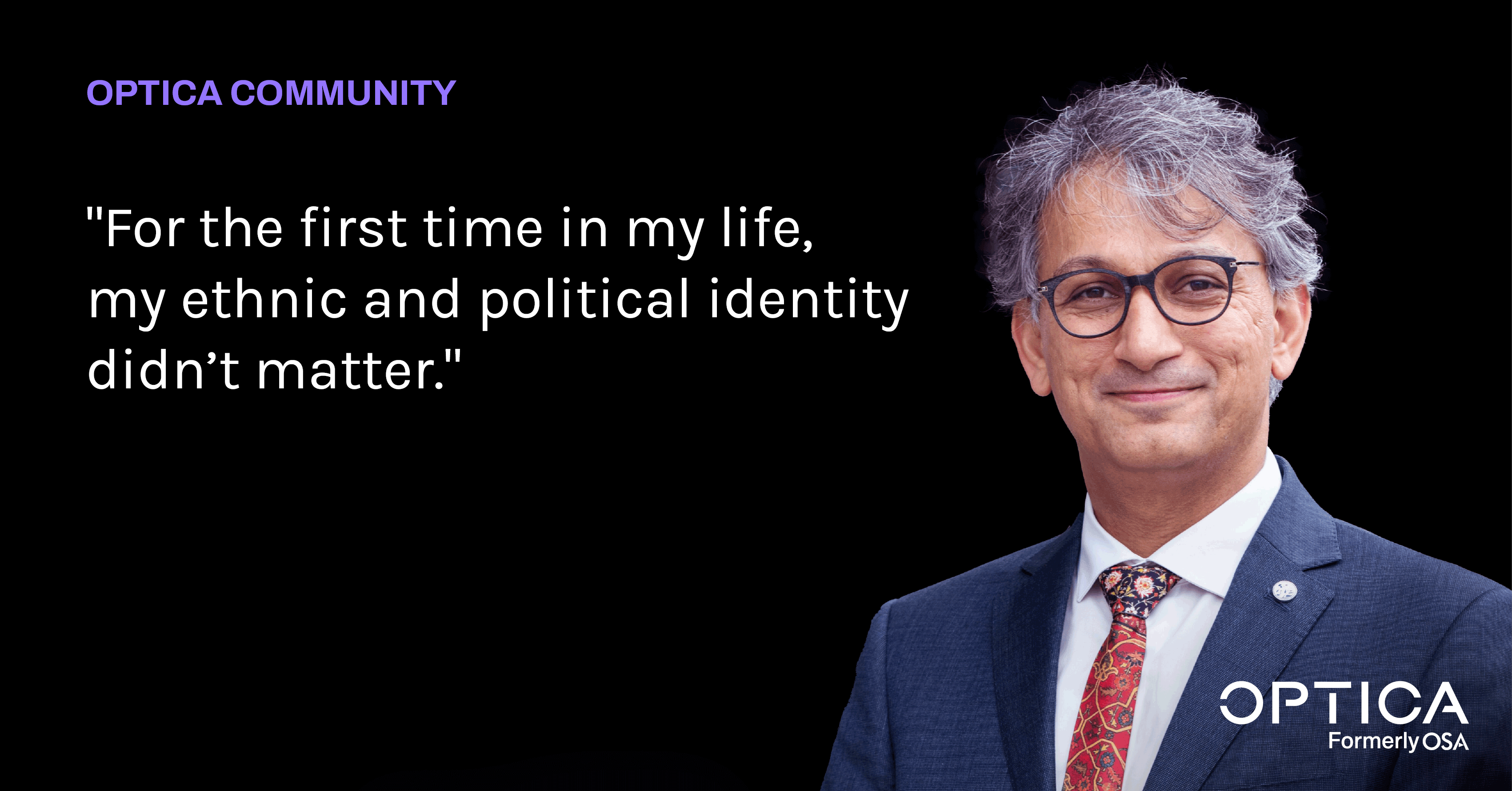
Ebrahim Karimi – ‘What Doesn’t Kill Me’
The first Optica Community story featured a profile of Kurdish-Canadian quantum scientist Ebrahim Karimi, Structural Quantum Optics Group leader at the University of Ottawa, Canada, co-director of Nexus for Quantum Technologies and an Optica Fellow. His was a compelling tale of perseverance in overcoming extreme circumstances and finding belonging in an international community where he has become one of the world’s leading quantum scientists.
In “What Doesn’t Kill Me,” a fascination with light helped Karimi survive war-torn Iran. Born just after the Islamic Revolution in 1978–79, he went from a prosperous life with a politician father to one of poverty and displacement.
Ebrahim Karimi said about the Optica Community campaign: “The response to this story has been the biggest I have had. The response has been bigger and warmer than anything I have ever published. Independent of the social media comments, I received over 100 emails, sms and calls from colleagues (and even some people I have never met) expressing their sympathy and nice words. Some colleagues even advised posting the story on our department’s website to motivate the young generation.
“On my LinkedIn, for this story, I have had 50 thousand views, over 1000 likes and over 100 comments; on my Facebook, over 500 people liked the post and wrote 35 comments; on my Instagram, over 2200 liked, and 50 comments; on my Twitter, over 5000 impressions, with over 30 retweets. The President of Canada’s funding agencies said, ‘you are truly inspiring, thank you for sharing such a truly inspiring story. We are glad you are here in Canada.’
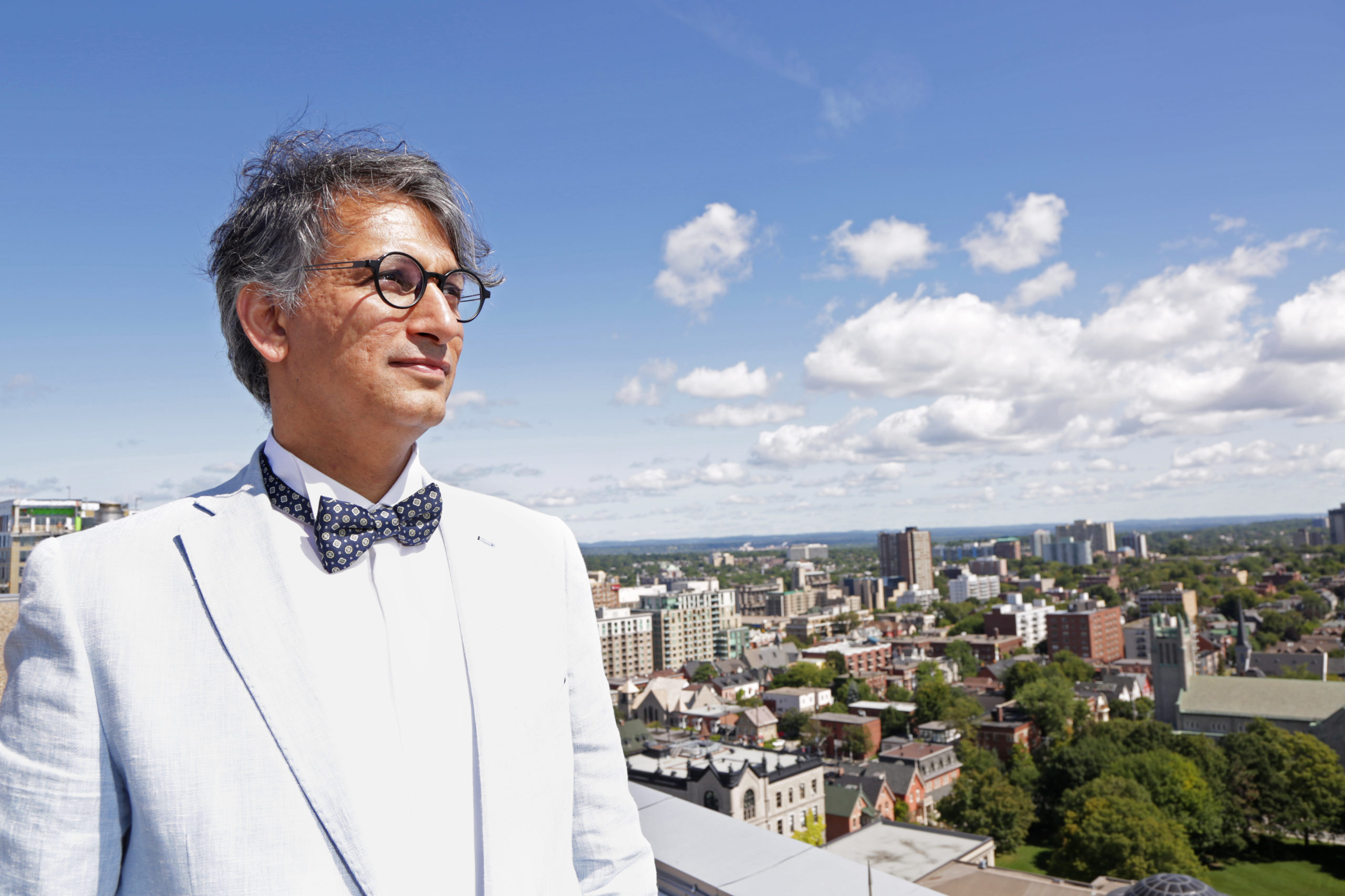
“The Director of photonics entrepreneurship wrote to me, “What a story! Wonderful to learn that moving to Canada made your career blossom and that you found a home in Optica. My best wish is for your continued academic achievement and your reunion with your family one day. In response to my story, one message said, ‘the strongest steel is forged by extreme heat and intensive pressure’. Talking to Matter PR and making this story has been like therapy.”
“Although I have always been 100% an Optica person, it has made me feel an even greater affinity with the society.”
Read What Doesn’t Kill Me to learn more about Ebrahim Karimi’s story.
Ana Maria Rey – ‘The Clockmaker’
Our second story celebrated Colombian theoretical physicist Ana Maria Rey. “The (Atomic) Clockmaker” revealed Rey’s pursuit of her passion for physics, despite the wishes of her family, who encouraged her to choose a safer career path. “You need to find a ‘real’ job,’” Rey’s father told her.
Rey’s committed pursuit of deep truths and beautiful insights into physics across borders and over obstacles resulted in tremendous technical and scientific benefits for all humankind. Rey grew up in Bogotá, Colombia, in the early 1990s as terrorism gripped the city. Conflict raged between drug cartels and the government. Rey escaped the madness by immersing herself in her schoolwork and becoming captivated by science.
Making connections within the optics and photonics community completely transformed her career after she moved to the University of Maryland to pursue her PhD. In February 2022, Rey was inducted into the Colombian Academy of Exact, Physical and Natural Sciences (Academia Colombiana de Ciencias Exactas, Fisicas y Naturales) for her immense contributions to AMO physics, condensed matter physics and quantum information science.
“I felt the beauty of physics. It governs our universe, from the movements of electrons inside an atom to the behaviour of black holes.”
To learn more about Ana Maria Rey’s story, read The (Atomic) Clockmaker.
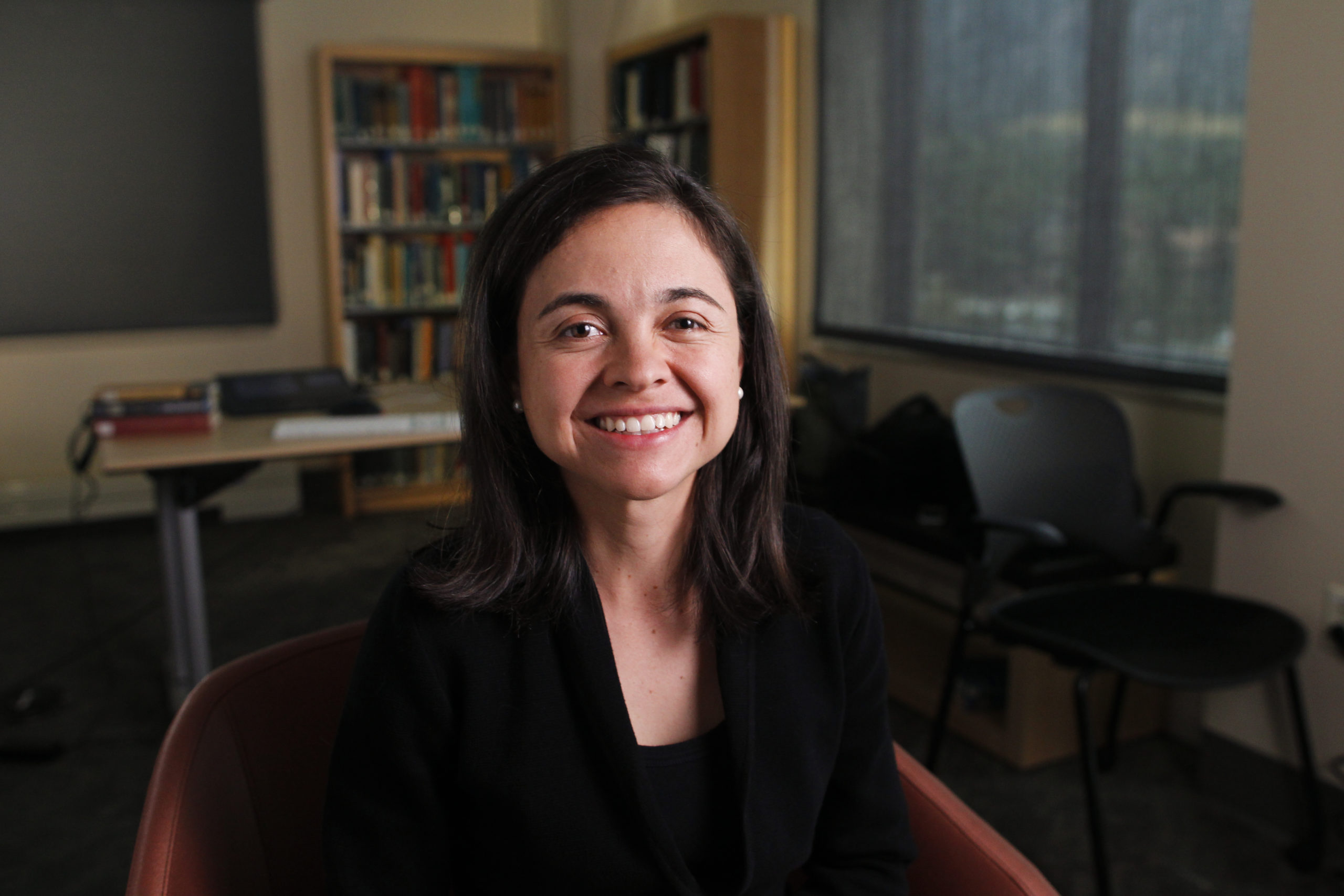
Franklin Dollar – ‘Free Pizza’
The third instalment in the Optica Community series celebrated Native American physicist Franklin Dollar whose life was transformed by a free pizza flyer. “Free Pizza,” told how Dollar navigated a difficult transition from living in a close-knit tribal community to a large state university to become the physicist he is today. Dollar grew up among the Dry Creek Band of Pomo Indians, an Indigenous Nation in California famed for their exceptional basket weavers, artists and bakers. He lived at the northern edge of California’s wine country, where the disparity in wealth was stark. “On one side, you have wineries and Michelin star restaurants, but on the other, trailers and impermanent housing.”
In high school, Dollar found a great mentor in his science teacher, who encouraged him to study physics and to apply to a leading university, but the transition from tribal life to the University of California, Berkeley, was difficult. Dollar’s life was transformed when a flyer for an event offering free pizza caught his attention. It prompted him to attend an information session for a research program at the Center for X-Ray Optics at Lawrence Berkeley National Labs. He saw an environment that resonated with him. “When I saw how these people worked, I said, ‘I want to do what these guys are doing!’ I just loved the climate and the environment. And so, I applied.”
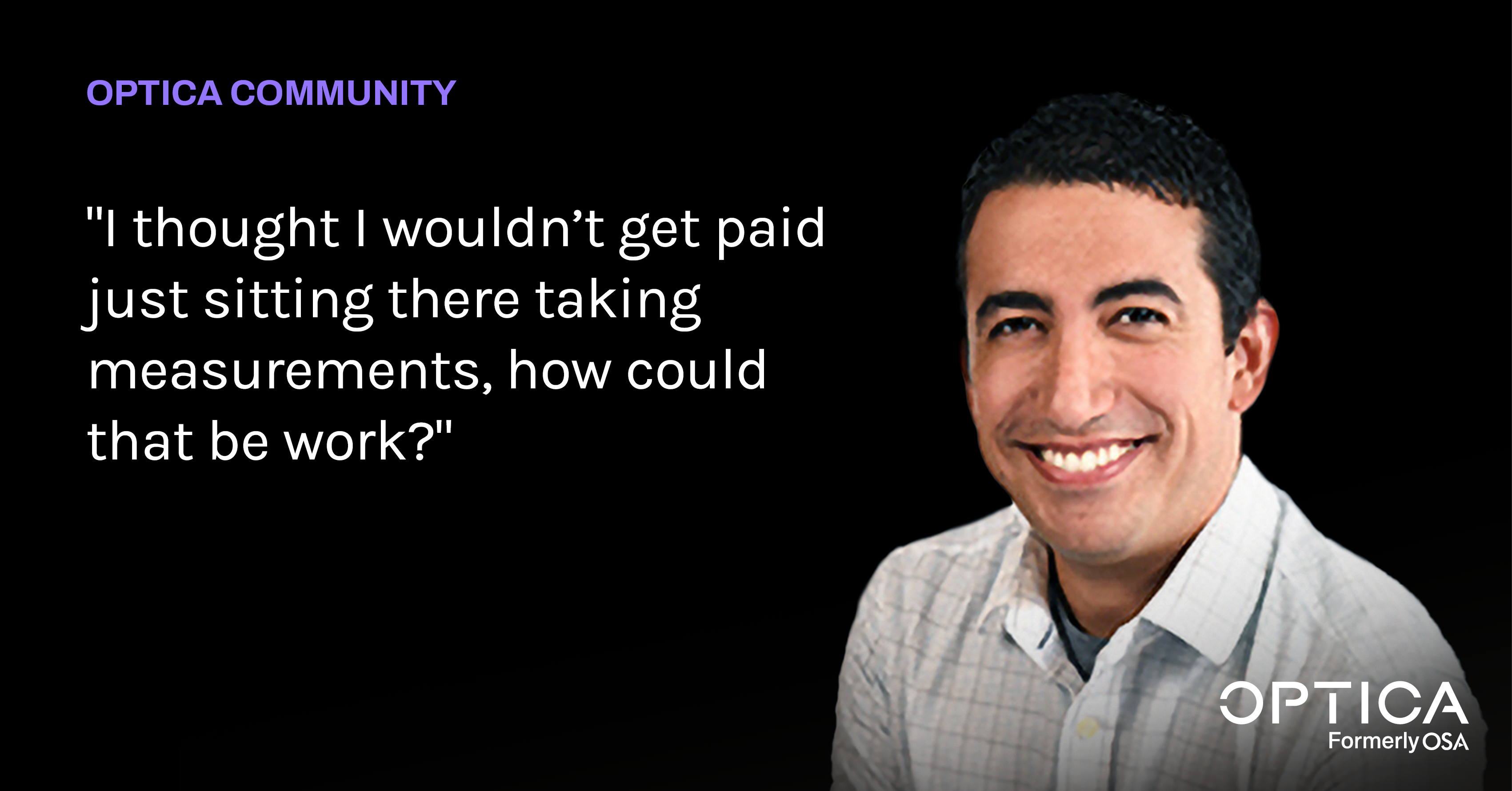
Today, Dollar is Associate Dean of Graduate Studies and Associate Professor of Physics and Astronomy at the University of California, Irvine School of Physical Sciences. He is currently working on the most powerful laser in the US — the Zetawatt-Equivalent Ultrashort pulse laser System or ZEUS — where he and his team are preparing to send its first pulses into an experimental target. He also works to encourage other native students to pursue scientific knowledge while staying true to their culture.
Dollar was recently named a Fellow of the American Physical Society (APS) Division of Plasma Physics. This honour recognised his contribution to high-intensity laser physics and his committed efforts to change the culture of his field in the realms of diversity, equity and inclusion (DEI).
To learn more about Franklin Dollar’s story, read “Free Pizza.”
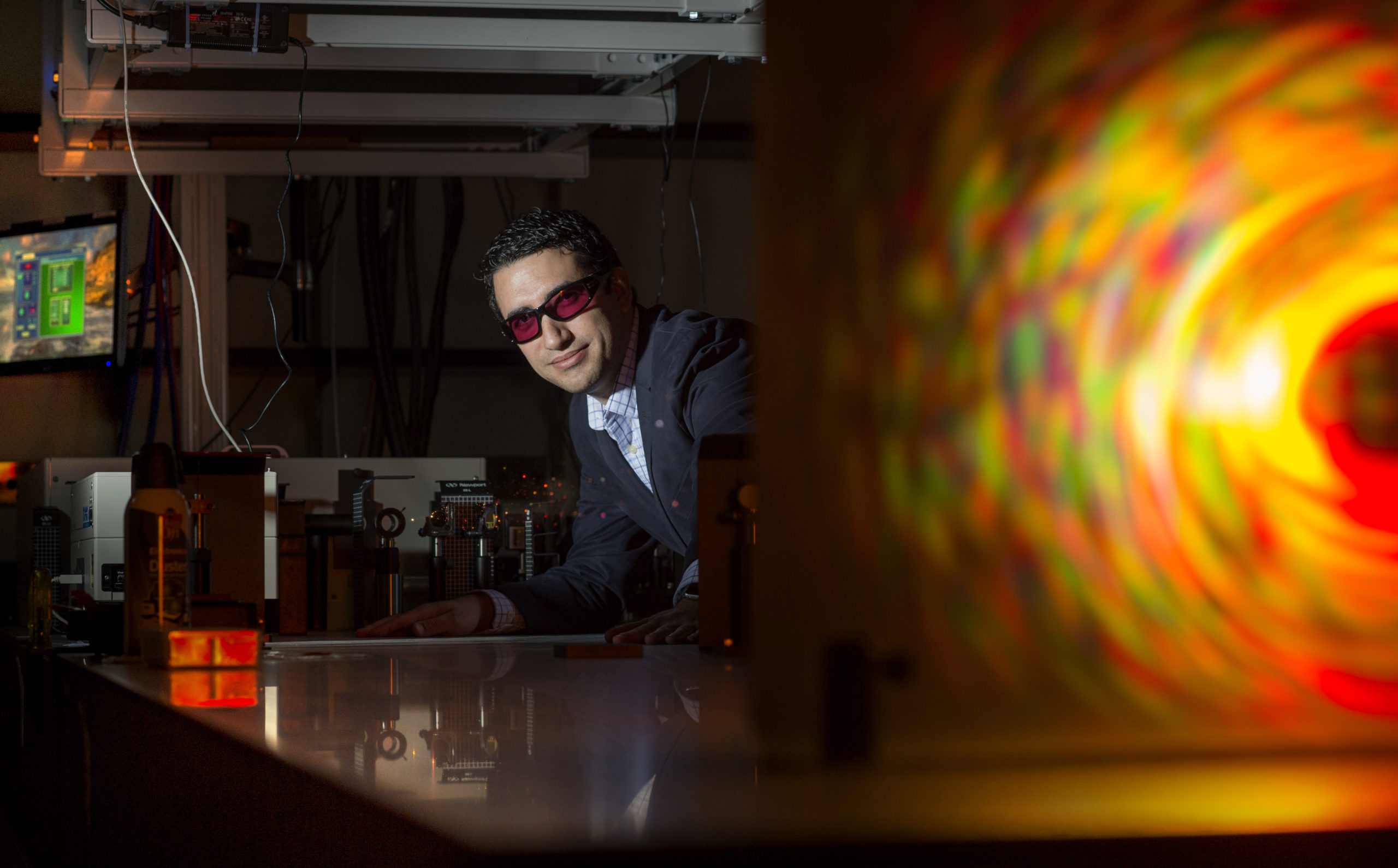
Setsuko Ishii – ‘Magician of Light’
One of our profiles celebrated an unorthodox member of the light science community – Tokyo artist Setsuko Ishii who combined her dual passions for physics and painting to become one of the world’s most prolific hologram artists.
The fourth instalment in the Optica Community series “Magician of Light” told how Ishii combined her love of art and science to capture the magic of light and create an iconic art style. “Holography is a medium that ‘spins out’ light. Everyone has likely seen such breath-taking moments as a rainbow appears after the rain, a burning-red sunset, or the deep blue at twilight that envelops and submerges everything. In such moments, we are reminded of the existence of sunlight and become conscious of nature itself,” said Ishii.
Optics is the physics you can see,” said P. Scott Carney, Optica’s Chief Scientist ” Setsuko Ishii channels the beauty that optical scientists see in their work and makes it speak to everyone.”
Originally pursuing her passion for science, Ishii trained in applied physics at the Tokyo Institute of Technology (TIT) and painted in her spare time. After graduating, she began her second career as an artist, studying fine art and European oil painting at the Sokei Academy of Fine Arts.
Her artistic development continued when she enrolled at the L’École National Superieur des Beaux-Arts to study fine arts and painting. Eventually showing her work publicly, Ishii felt her early love of physics pull her back toward science. “Despite having solo and group exhibitions, I asked myself: ‘is painting a suitable medium for me?’”
Ishii would find the solution to her dilemma in 1974 while walking through the streets of Tokyo. She was “completely mesmerised” by the spectacular sight that caught her eye: “When I moved, I saw an image in mid-air shift its position, but I could not grasp it even though it was in the palm of my hand. This was my first encounter with a hologram.”
Today, Ishii is celebrated as one of the most prolific holographic artists in the world. Her exhibitions and public installations have been shown all around the globe, from Palazzo Fortuny in Venice, Italy, to the Walker Hill Art Center in Seoul, South Korea. She has been named artist in residence at the Museum of Holography in New York three times and artist in residence in Paris.
To learn more about Setsuko Ishii’s story, read “Magician of Light.”
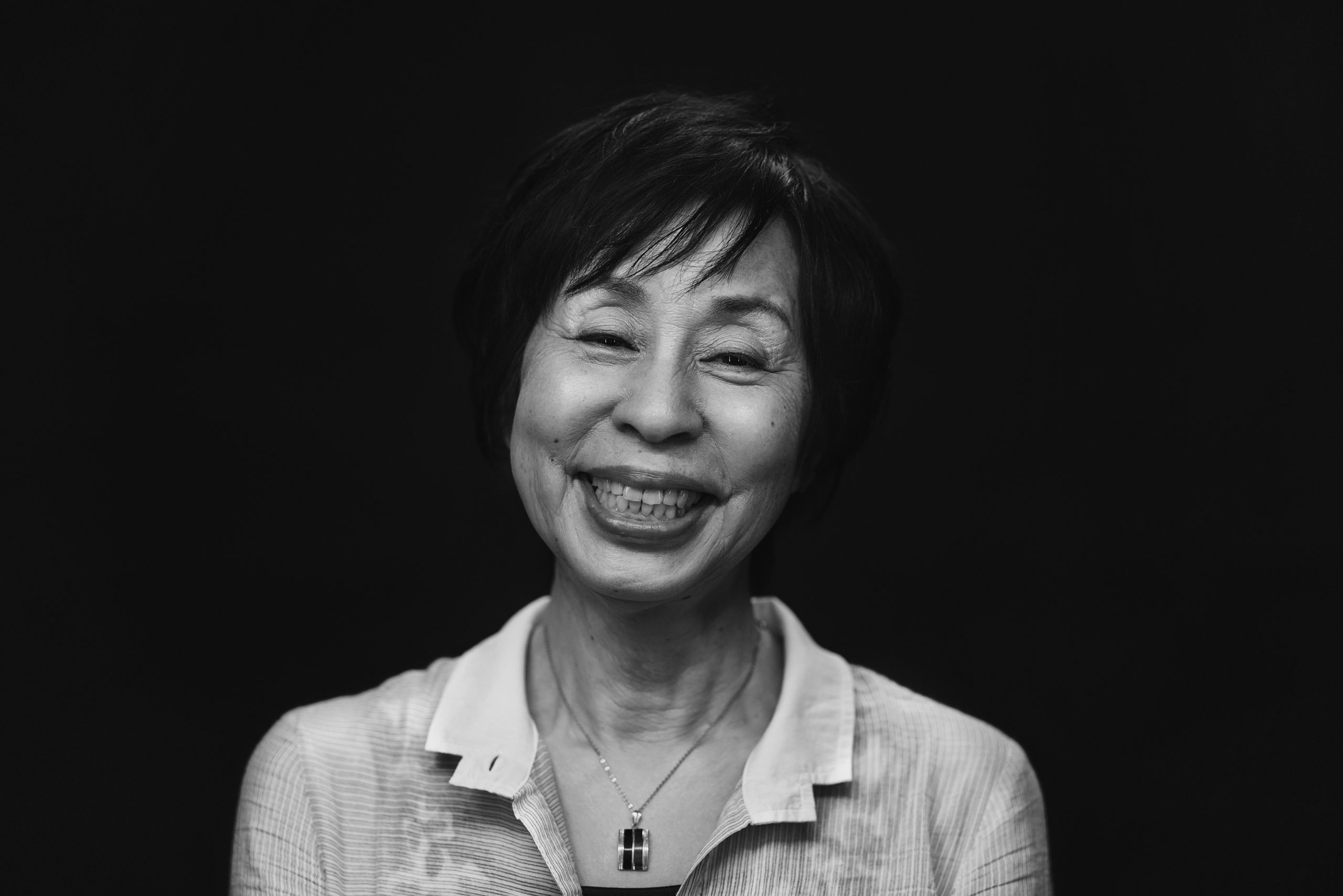
Hatice Altug – ‘An Uncertain World’
Our feature profile, “An Uncertain World,” recalled the story of Hatice Altug and how uncertain weather and failed crops in a farming village in Turkey inspired a nine-year-old girl to become one of the world’s leading physicists. Her journey began as she grew up in a farming community in southwestern Turkey, where she witnessed the unpredictability of nature.
“Everyone in the village put their efforts into growing beautiful produce that looked nice and green and blooming in the early part of the season. Then sometimes the rain came at the wrong time. Sometimes it was too hot, or there was a frost, and the yield would suddenly drop,” said Altug. “This is why I turned to machines – to make systems I could design, predict and control.”
Altug’s determination would take her to Bilkent University in Ankara, Turkey, where she was one of only three female undergraduate students studying physics. Her college life was lonely: her classmates wouldn’t speak to her, and she couldn’t visit home. To escape the solitude, she took extra classes and found solace in a laboratory, where she discovered optics and photonics. She believed she had the key to making efficient systems.
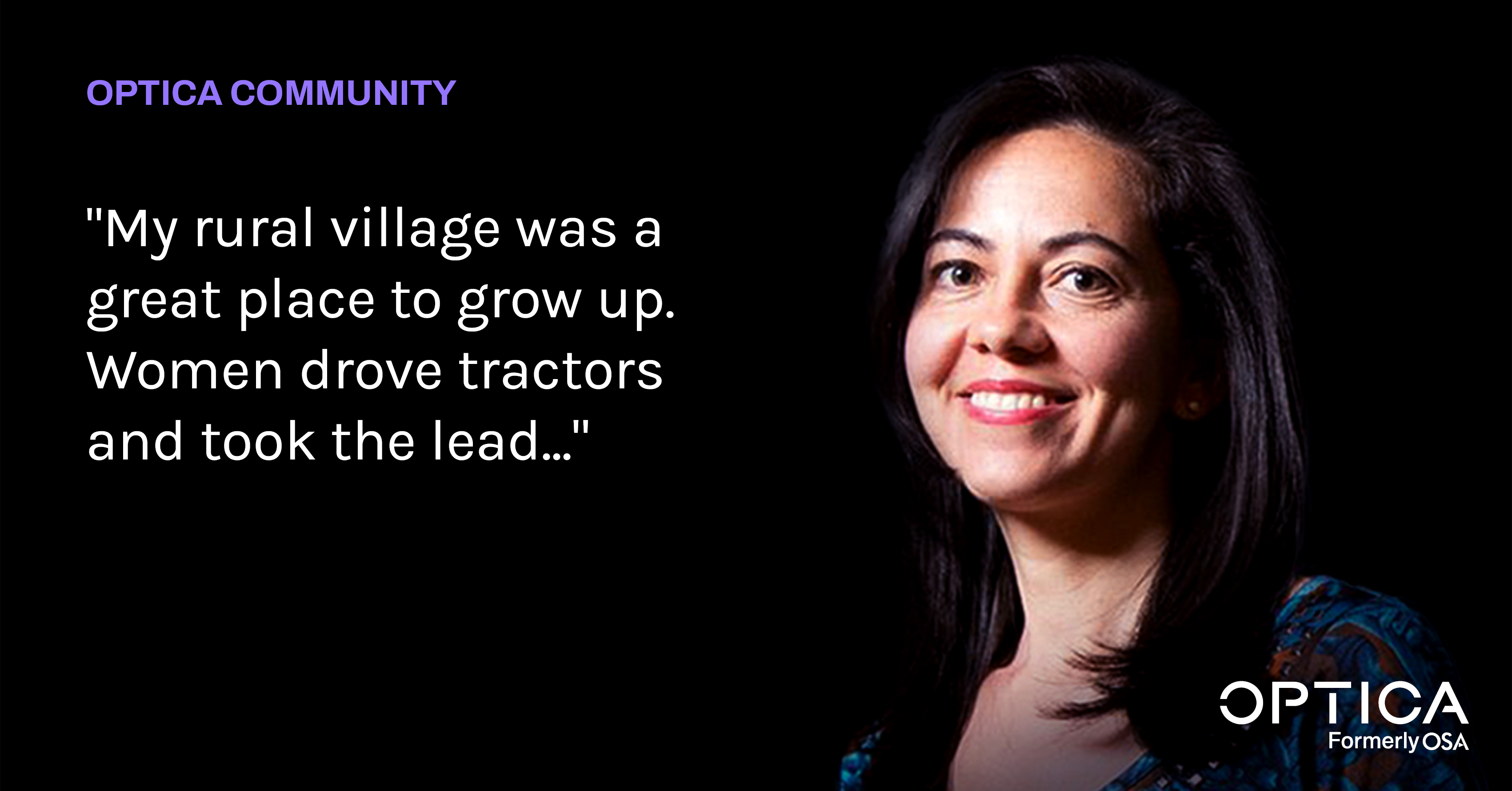
“I loved lasers and the exact nature of optics and photonics. I knew I could make useful applications with light,” said Altug. Later, Altug pursued a PhD at Stanford, where she encountered new light control methods. “I came across nanophotonics, sculpting light at nanoscale to manipulate light-matter interactions in unprecedented ways.”
Today, Altug is a fellow of Optica and a full professor in the Bioengineering Department of Ecole Polytechnique Federale de Lausanne (EPFL), Switzerland, and director of the EPFL Doctoral School of Photonics. She is the winner of numerous grants and awards, including Optica’s Adolph Lomb medal, the IEEE Photonics Society Young Investigator Award, and the Presidential Early Career Award for Scientists and Engineers (PECASE) – the highest honour bestowed by the United States government on outstanding scientists and engineers in their early careers.
To learn more about Hatice Altug, read “An Uncertain World.”
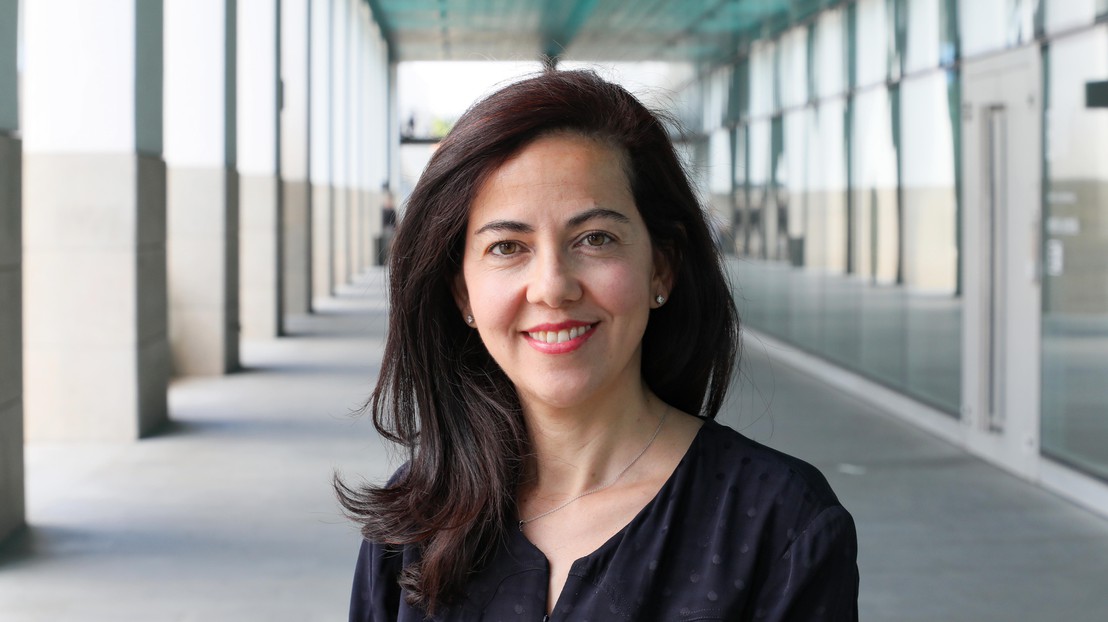
Timothy Imogore – ‘Survivor’
“Survivor,” the sixth instalment in the Optica Community series, featured Timothy Imogore, a young Nigerian surviving sectarian violence, finding escape through education and advancing optics in Africa. The story highlighted the PhD student’s passion for empowering other young Africans to pursue optics and photonics. Imogore’s drive to promote optics education and support others in their career stems from his experiences growing up amidst turmoil in his home country.
Imogore was a teenager living in Zamfara State, Northern Nigeria when it declared Sharia Law. “Hostility came with the declaration. It made Zamfara look like an Islamic state. There are many wonderful supportive Muslims, but after Sharia law, sectarian violence erupted, leading to the death of over twenty thousand people. People were scared and fled the state; nobody wanted to invest in the country.”
The ensuing chaos threatened to take a toll on Imogore’s education. “The religious intolerance led to riots and massacres. Imagine being a kid in a school and hearing gunshots outside. It was terrible.” Despite this trauma, Imogore saw education as a way to build a better future for himself and his country. “In Nigeria, there is no integration of cultures. It doesn’t happen. In my opinion, education is key. You see people of all cultures and backgrounds integrate when you go to a high-educational setting like a university. Education breaks down walls; it pushes diversity.”
He pursued his dream of becoming a physicist, studying physics at the Federal University of Technology, Minna, Nigeria. He eventually won an Abbe School of Photonics scholarship and set out for Friedrich Schiller University Jena in “I fell in love with Jena. The absence of religious and gender segregation and discrimination was a breath of fresh air.”
Imogore is committed to giving back by advancing optics and photonics in Africa. “Africa has the potential to be an optics and photonics powerhouse like the US and Germany. My vision is to see the potential of young Africans put to use to make the African continent a key player not just in optics and photonics but in other high-tech fields.” Imogore is finding ways to advance his vision, including serving on Optica’s Diversity, Equity and Inclusion Rapid Action Committee. “I felt honoured to be offered this opportunity to contribute to the optics and photonics community. This is my passion – advancing the progress of my home country and continent through optics and photonics by tapping the potential of others like me.”
To learn more about Timothy Imogore, read “Survivor.”
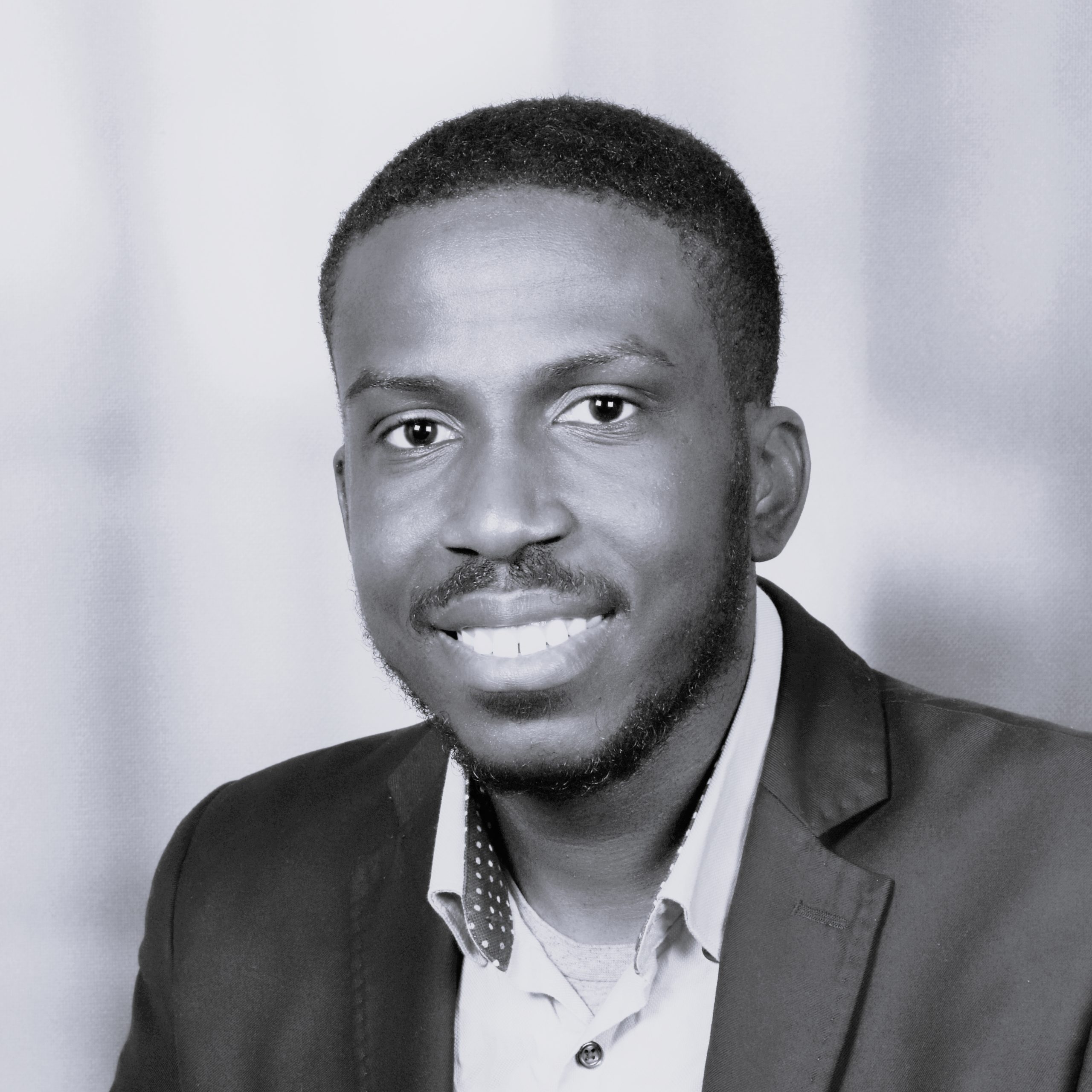
Laura Lechuga – ‘Undefeated’
“Undefeated,” the seventh instalment in the Optica Community series, featured Laura Lechuga, full Professor of the Spanish National Research Council (CSIC) and Head of the Nanobiosensors and Bioanalytical Applications Group at the Catalan Institute of Nanoscience and Nanotechnology (ICN2) in Barcelona (Spain) and at the Networking Biomedical Research Center (CIBER-BBN).
In 1985 Lechuga had just completed her bachelor’s in chemistry and applied for a summer internship with an oil company in Cadiz, Spain. She was excited to put her new degree and expertise to use until the interview left her speechless. “I was young, enthusiastic, and thoroughly prepared. Then a hard reality hit me.” Three middle-aged men sat on the interview panel and asked their first question. ‘Do you have a boyfriend?’ “I thought I was there to talk about science, my scores, or what I could bring to the company. Nothing could have prepared me for this kind of attitude. This was my first encounter with sexism.” Their second question hit even harder. “Then they asked, ‘are you planning on having a baby soon?’” Lechuga was so shocked she could not find the words to respond. “Eventually, they gave the position to a man from my university with a weaker CV. I feel I didn’t get the job because I was a woman.”
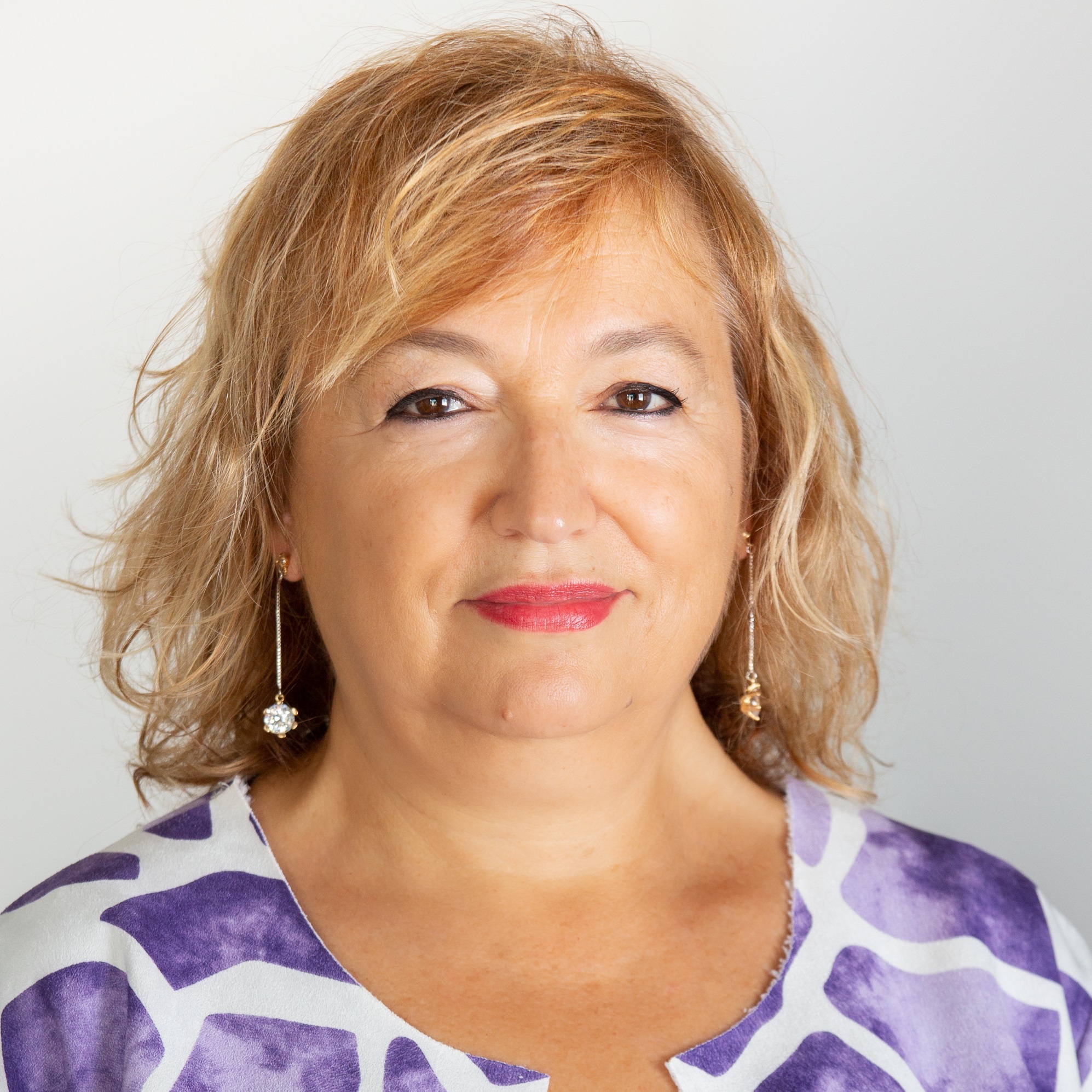
“It was a hard lesson. Until then, my only competition had been from female classmates in our strict religious school. It was a real surprise to experience these attitudes. But I would not let it defeat me.”
Lechuga developed her grit and passion early in her native Andalusia. “Life in Andalusia was not about making money. It was not a material life. We had a different mentality. We were home to Spain’s famous Flamenco culture, where the ethos was to enjoy life today because we might die tomorrow.” Lechuga was taught by nuns in an all-girls school where they instilled strong values of hard work, discipline and perseverance. She took these to heart and excelled, even though Cadiz was full of distractions. “There were always celebrations: Carnival, Easter, Christmas; flamenco festivals every weekend through May and June. It was difficult to get any work done at all!”
To learn more about Laura Lechuga’s story, read ‘Undefeated‘.
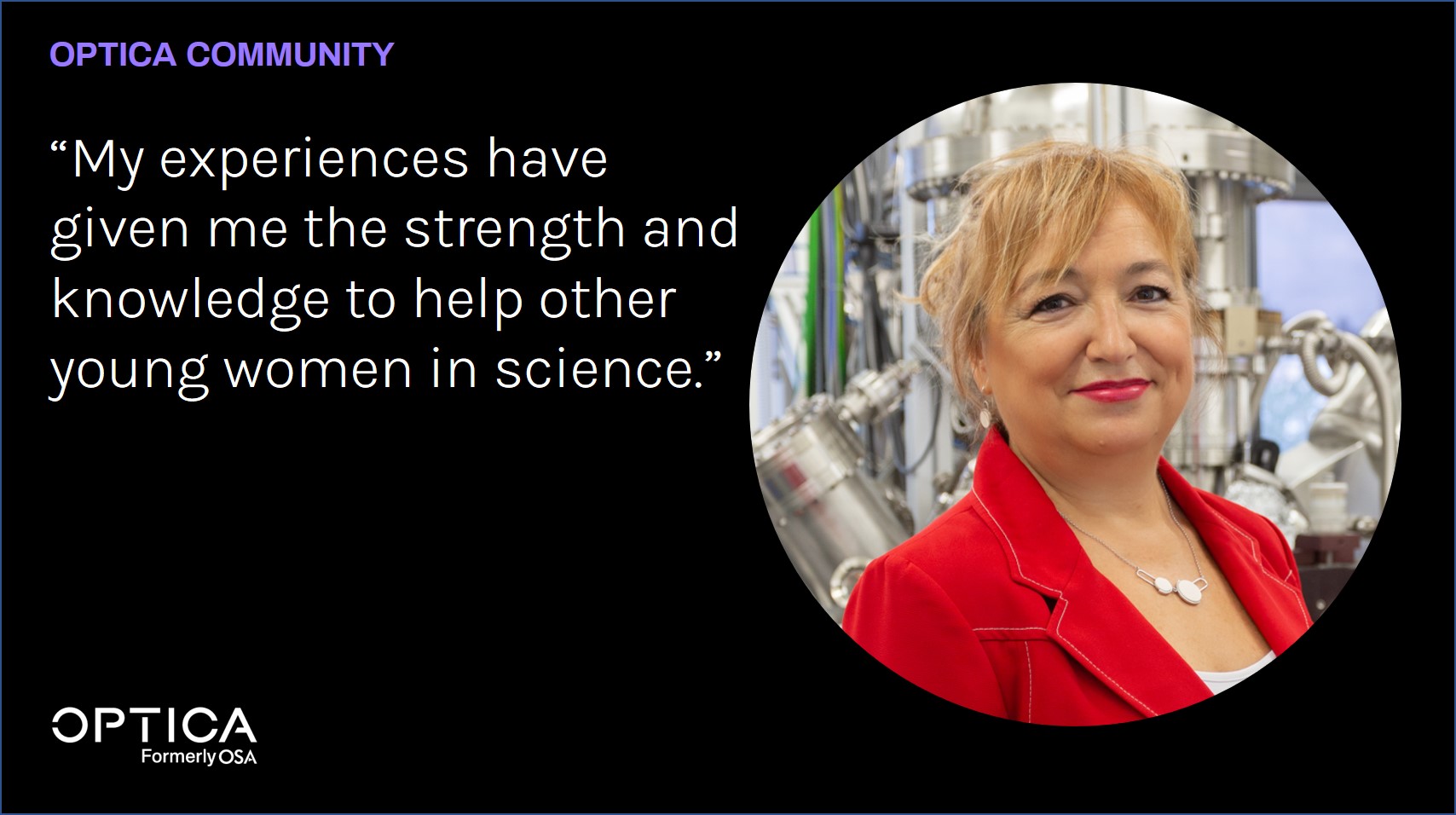
If you are looking for a specialist science communications and PR agency that covers all aspects of science, technology and engineering, please get in touch with us today. Email info@matterpr.com
